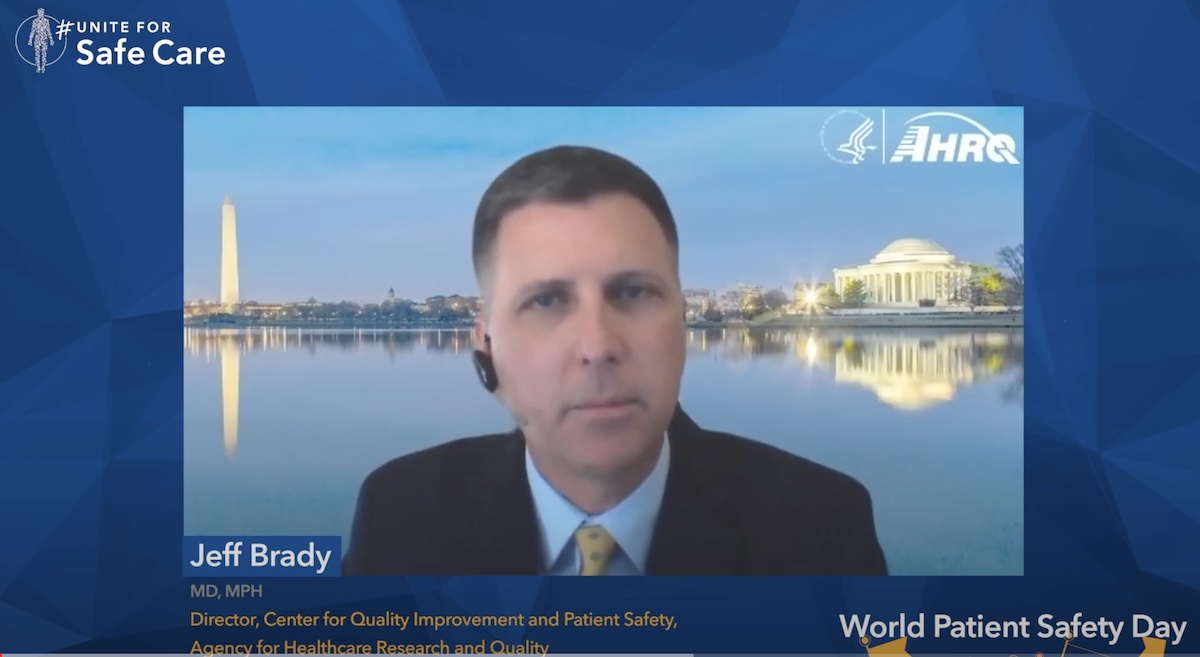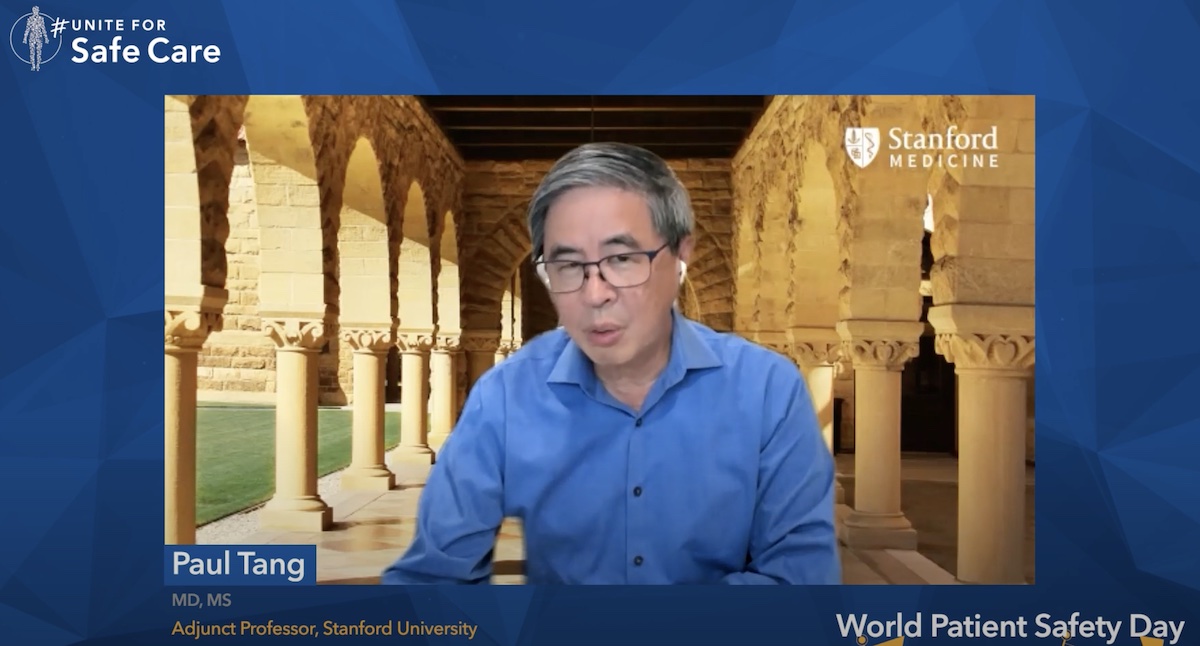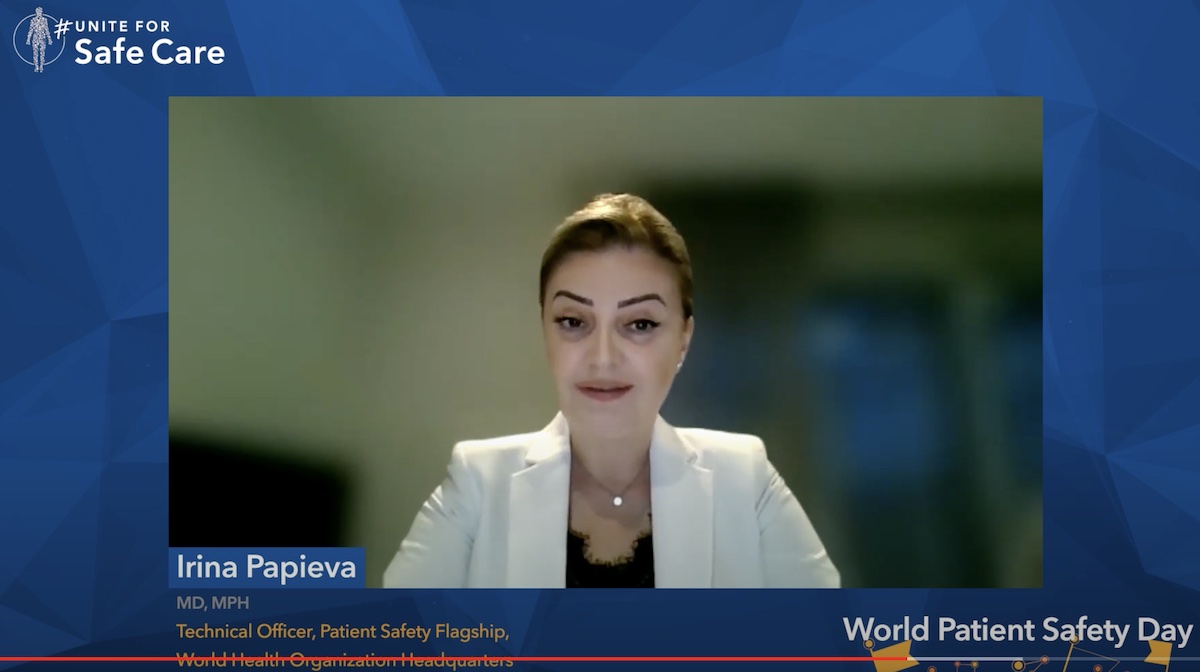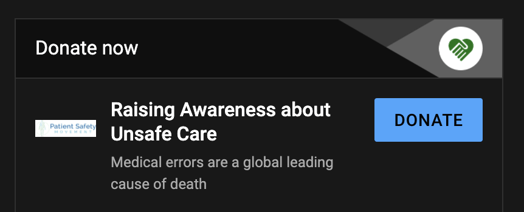I recently had the opportunity to watch a video that was published by our valued partners at the Patient Safety Movement Foundation -- "The Current State of Patient Safety."
This was originally part of a live-streamed event called "Unite for Patient Safety" on World Patient Safety Day, September 17th.
Introducing the presenters was Martin J. Hatlie, JD, who is a patient advocate, and serves as the Co-Director of the MedStar Institute for Quality and Safety President and CEO of Project Patient Care.
Dr. Jeff Brady
The first presenter was Jeff Brady, MD, MPH, who is the Director of the Center for Quality Improvement and Patient Safety at AHRQ, being in that role since 2014.

Hatlie asked, “In your view, what’s driving patient safety now? And will you speak to ‘Safer Together: The National Action Plan for Patient Safety’ that AHRQ published last year on World Patient Safety Day?”
Dr. Brady’s initial thoughts included:
- There’s a lot happening with patient safety and there’s still a lot to do
- Covid pandemic has served as a “real-life stress test” for health systems, “calling attention to some of the weaknesses”
- Have seen positive benefits from resiliency and well-designed system-based care
- Organizations that embrace the principles of High-Reliability Organizations are succeeding in the face of these challenges
- Patient safety and healthcare worker safety are both critically important
The National Action Plan states that “foundational factors that must in place for safe care:
- Culture
- Leadership
- Governance
- Patient and Family Engagement
- Learning Systems
- Safety of the Healthcare Workforce”
Dr. Brady emphasized that these are all “prerequisities for safety,” since they are common elements that enbable almost all improvement work.
You can read the 17 recommendations in the report that are based on those foundational factors.
Dr. Paul Tang
The second presenter was Paul Tang, MD, MS, an adjunct professor in the Clinical Excellence Research Center at Stanford University and an internist at the Palo Alto Medical Foundation.

Dr. Tang said that patient safety is at a "tipping point" and that we can view the "glass half full opportunity" at this point in time. He acknowledged that it's been more than 20 years since the publication of the Institute of Medicine report that "raised the awareness" of not just the general public, but also healthcare workers.
He pointed, as many do, to aviation as an "exemplar" of safety due to factors including:
- They have "very visible and transparent failures"
- Standardized, mandatory, electronic data collection helps with learning
- A robust, legally-protected analysis process
This all helps aviation learn and it makes flying safer every year.
One advance that has created capabilities for learning and improving patient safety is the increased adoption of Electronic Health Record (EHR) systems. When the IOM report was issued, EHR's didn't really exist in healthcare. Healthcare also didn't have the legally-protected structures, and "frankly," he said, there weren't incentives in place to report problems.
in 2005, Congress created a number of patient safety organizations and databases through the Patient Safety and Quality Improvement Act of 2005 (PSQIA). This allowed organizations and individuals to report problems without fear of legal liability.
"These actions are necessary, but not sufficient for us to catch up with the aviation industry."
What was accomplished? "Not much yet," said Dr. Tang, without the EHR infrastructure in place, which came in the following years (thanks, in part, to incentives and funding from the 2009 HITECH Act).
In 2005, only 4% of U.S. physicians had an EHR, and about 10% of hospitals did. It was difficult to aggregate and analyze data that was mostly on paper. "90 to 95% of us now" use these systems, said Dr. Tang.
Having EHRs has "dramatically improved the feasibility of capturing and analyzing data related to patient safety." The adoption of EHRs:
- Reduces the burden of collecting data
- (In theory) improves the consistency of data to help with aggregation and analysis
What "excites [him] the most" is the learning that can be drawn from that aggregated data to "deploy to the front-line care givers so they can make better decisions and make fewer errors."
"We now have the capabilities to make healthcare safer. But we need the coalition of the willing (like the people who are watching this summit) in order to convert these possibilities into reality."
"If we choose to act, I think the glass is half full. We just need the will to do it."
Value Capture is part of the coalition of the willing (as are our clients) and we are so grateful that our clients have the will to lead and to drive transformation.
Dr. Irina Papieva
The third and final presenter was Irinia Papieva, MD, MPH, from the World Health Organization.

She spoke to the "importance of having a strategic and coordinated approach to patient safety that addresses the common causes" of errors and harm.
You can read about the 2019 WHO 'global patient safety action plan' that Dr. Paieva discussed.
The resolution established the annual World Patient Safety Day, and also urged member states to recognize patient safety as a top priority, aiming for every patient to receive respectful and safe patient care, each and every day.
Per AHRQ, the seven strategic objectives (generating 35 strategies) are:
- (1) policies to eliminate avoidable harm
- (2) high-reliability systems
- (3) safety of clinical processes
- (4) patient and family engagement,
- (5) health worker education, skills, and safety,
- (6) information, research, and risk management, and (
- 7) synergy, partnership, and solidarity
In most countries, we still don't have solid numbers about the amount of patient harm that occurs. All countries are being encouraged to establish baseline estimates around patient safety data and to establish national targets.
At Value Capture, we'd add... why not "zero harm" as a target?
You can donate to the Patient Safety Movement Foundation via the YouTube video page, look at the lower right corner...

Written by Mark Graban
Mark Graban has served healthcare clients since 2005. Mark is internationally recognized as a leading author and speaker on Lean healthcare. His latest book is "The Mistakes That Make Us: Cultivating a Culture of Learning and Innovation."


Submit a comment